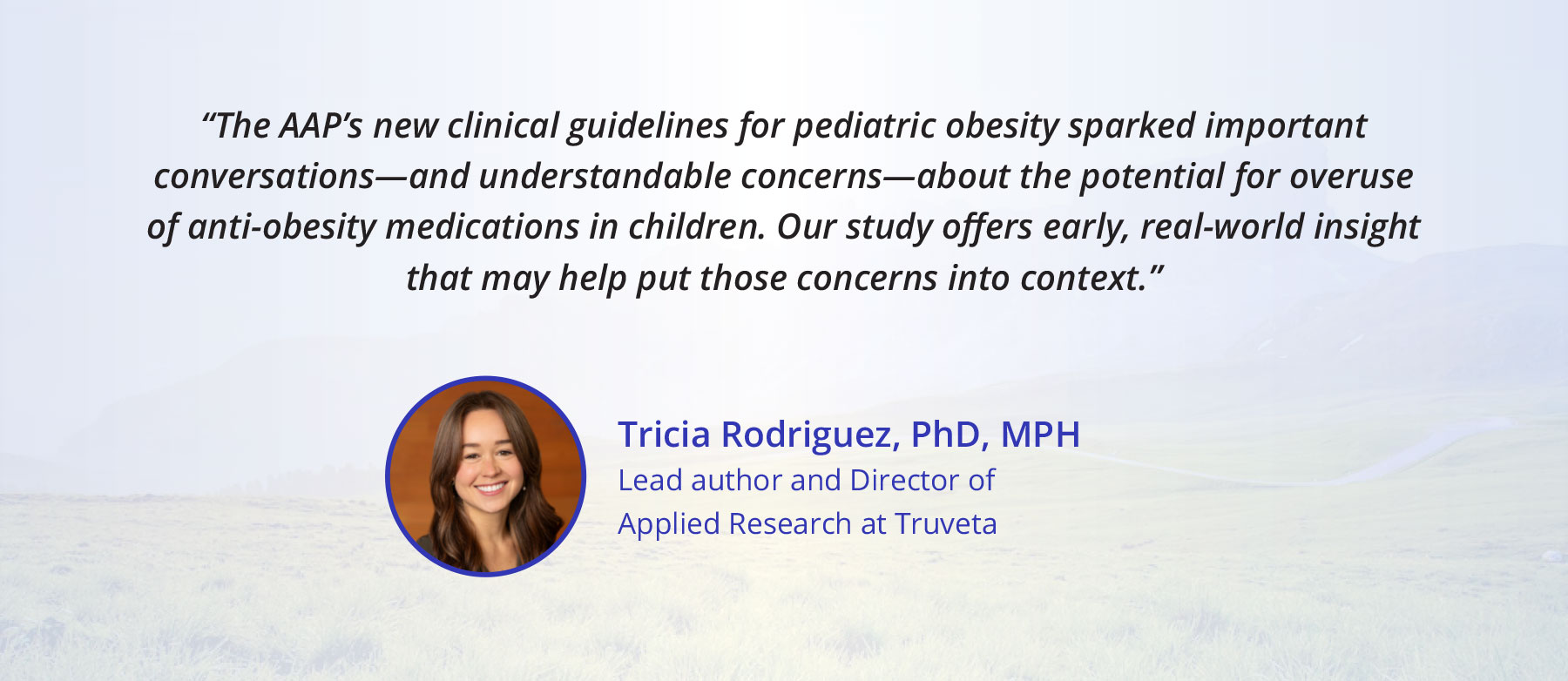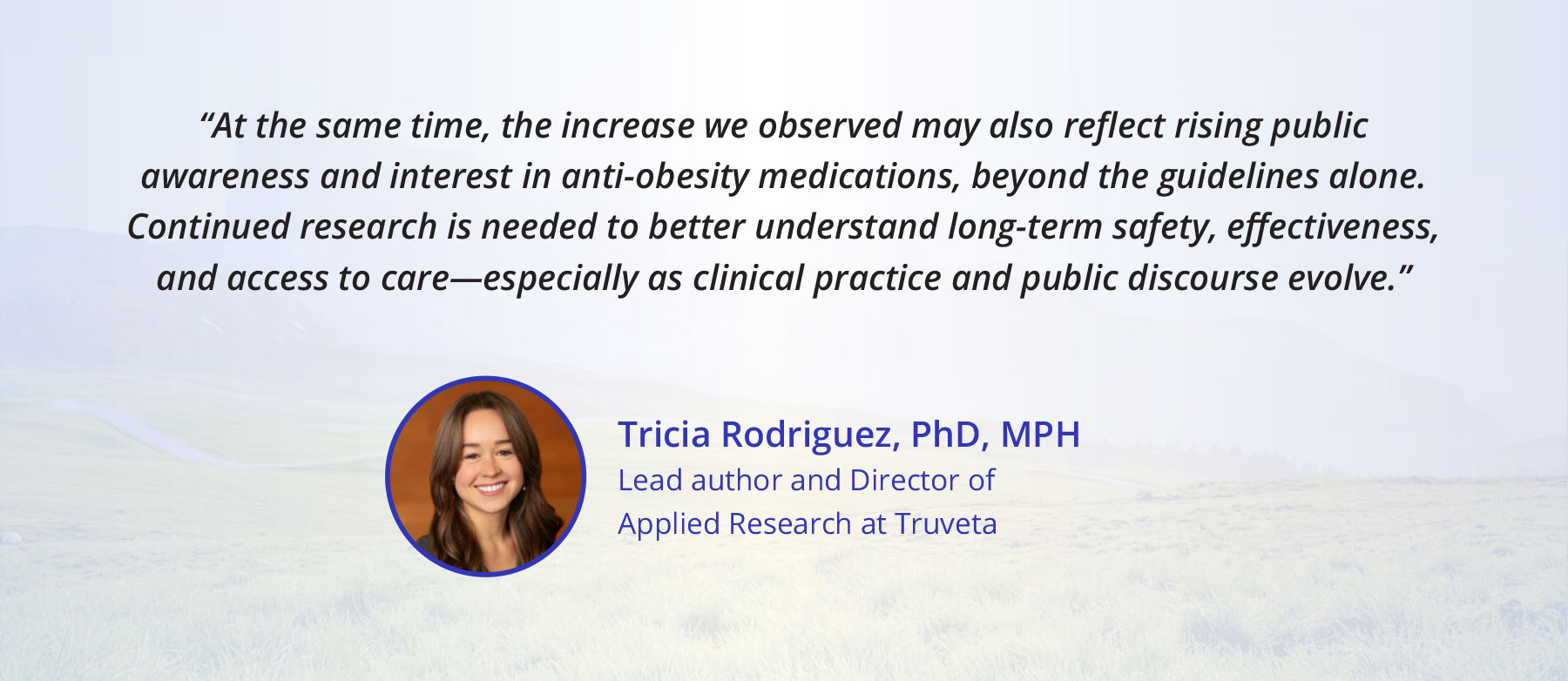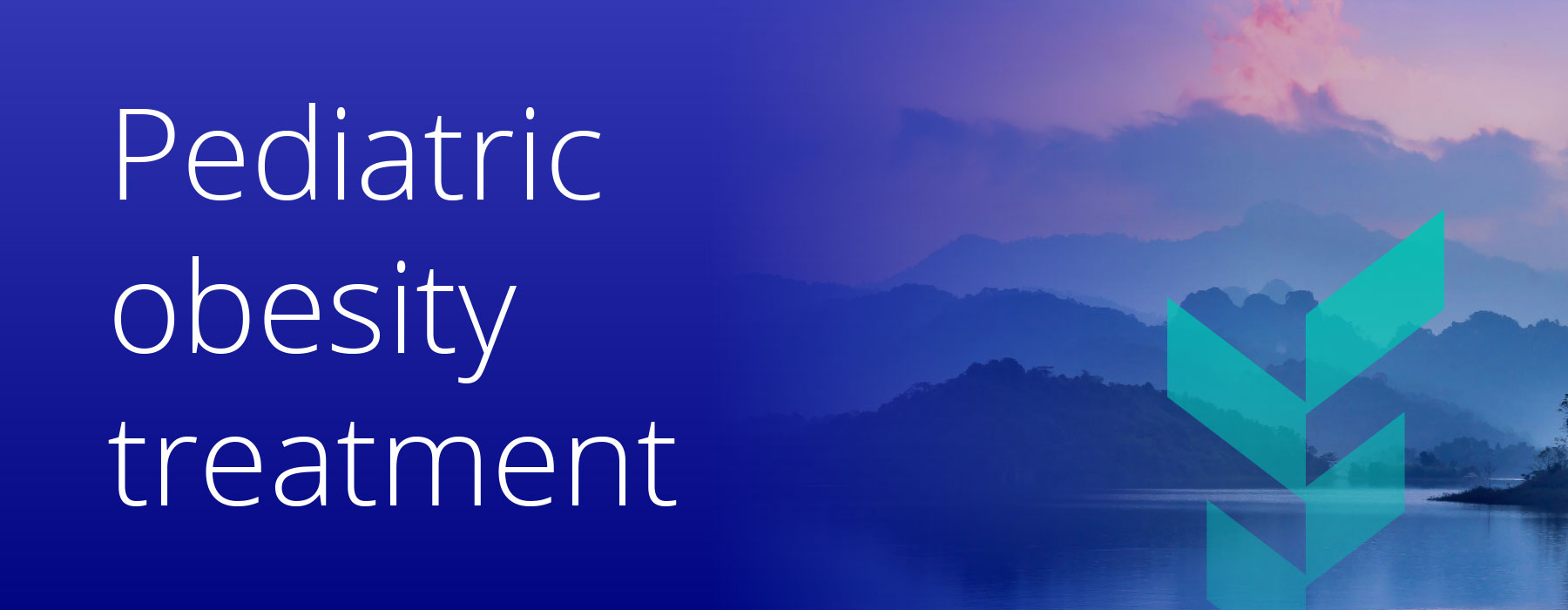In 2023, the American Academy of Pediatrics (AAP) released groundbreaking new guidelines recommending early treatment for childhood and adolescent obesity—including the use of medications for weight management in adolescents and cautioning against the common practice of watchful waiting. These guidelines marked a significant shift in management of pediatric obesity. But how much have things actually changed?
Today, a new study published in Pediatrics Open Science offers the first large-scale look at how U.S. treatment patterns have changed since the release of AAP guidelines.
What we learned from more than 300,000 children with obesity
The study, conducted by researchers at Truveta and Harvard Medical School, analyzed data from more than 310,000 children and adolescents with obesity between 2021 and 2024, who had not received obesity treatment in the recent past. Using Truveta Data, which includes de-identified electronic health records from a broad network of US health systems, the team looked at how often the population received lifestyle interventions (nutritional counseling or referral) or prescriptions for obesity treatment— before and after the AAP guidelines were released.
The key findings:
- Medication prescriptions for weight management increased significantly. The odds of a child or adolescent being prescribed a medication for weight management rose 65% immediately after the AAP guidelines were published and continued to rise each month afterward.
- Lifestyle interventions remained more common. About 9.7% of eligible patients received nutritional counseling or referrals — far more than those who received medications, but the increase over time was modest. After the guideline release, only 1 out of 10 children had evidence of new nutritional counseling or referrals.
- Medication use is still rare overall. Despite the rise, only 0.4% of eligible children and teens started weight-loss medications after their visit — a reminder that real-world practice changes take time and face barriers to implementation.
GLP-1s on the rise, metformin on the decline
Among the medications prescribed, metformin remained the most commonly used, but its share declined sharply after 2023. Meanwhile, semaglutide (known commercially as Wegovy and Ozempic) saw a dramatic rise—jumping from 2.5% to over 26% of prescriptions for those who started a medication for obesity treatment after the new guidelines. In a separate report, Truveta Research also explored the use of FDA-approved GLP-1 RA prescriptions among adolescents with obesity, finding that while the rate of prescriptions is increasing, there are still few adolescent patients using anti-obesity semaglutide (sold as Wegovy).
This trend tracks with the wider surge in awareness and use of GLP-1 RA medications in both adults and adolescents. But it also raises questions about cost, access, and long-term safety—particularly for younger populations.

Rodriguez noted that while the research did observe a meaningful increase in prescribing since the guidelines were released, overall rates of pharmacotherapy remain very low. These treatments were most often used for adolescents with more severe obesity, not broadly among younger children or those with milder health concerns. Rodriguez further suggests that, so far, prescribing decisions appear to be targeted and cautious.

Why change is hard—and what’s still needed
Despite evidence-backed guidelines, a small fraction of children and adolescents with obesity initiated any treatment for obesity. Barriers to accessing effective treatment can include:
- Limited access to intensive lifestyle programs, especially outside of urban centers
- Insurance and coverage gaps for anti-obesity medications
- Concerns from both providers and caregivers about stigma, side effects, or appropriateness
- Lack of consistent documentation in electronic records for treatments like dietary counseling

Why this matters
Pediatric obesity affects nearly 1 in 5 children in the U.S. and is tied to serious health risks—from type 2 diabetes to cardiovascular disease and mental health challenges. Early, evidence-based treatment can make a profound difference in long-term health outcomes. Uptake of clinical guidelines is often limited, and ongoing monitoring with real-world data is key for understanding ongoing adoption and identifying both barriers and facilitators to kids accessing effective, evidence-based treatments.
At Truveta, we’re proud to contribute the real-world evidence that can drive better, more equitable health outcomes. This research—powered by Truveta Data, which includes more than 120 million patients—is part of our ongoing mission of Saving Lives with Data through trusted, timely insights.
To read the full study in Pediatrics Open Science, click here.

